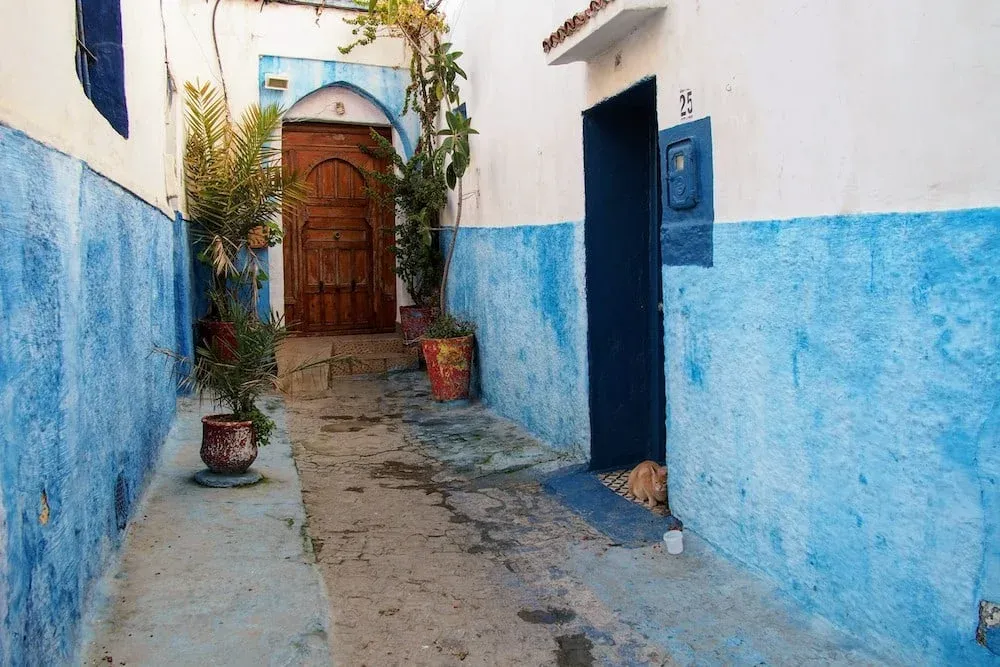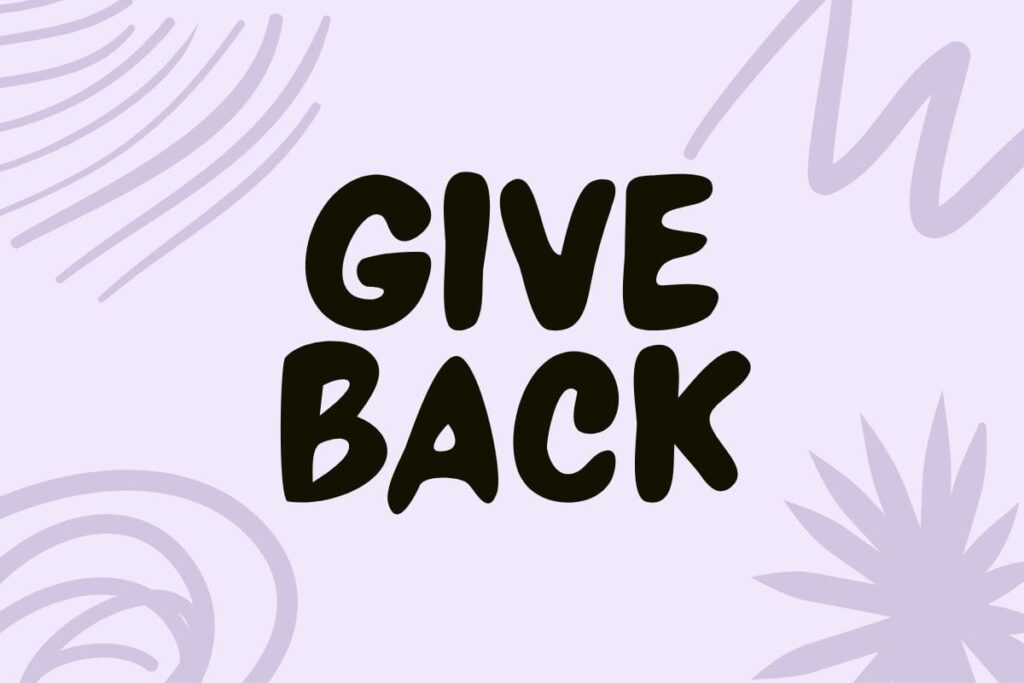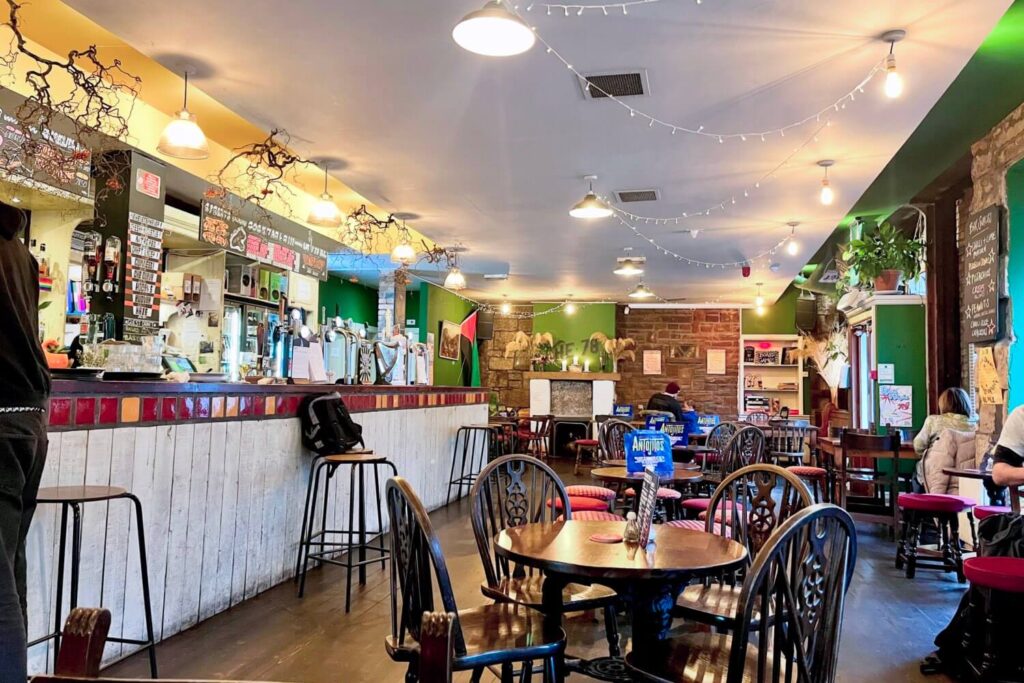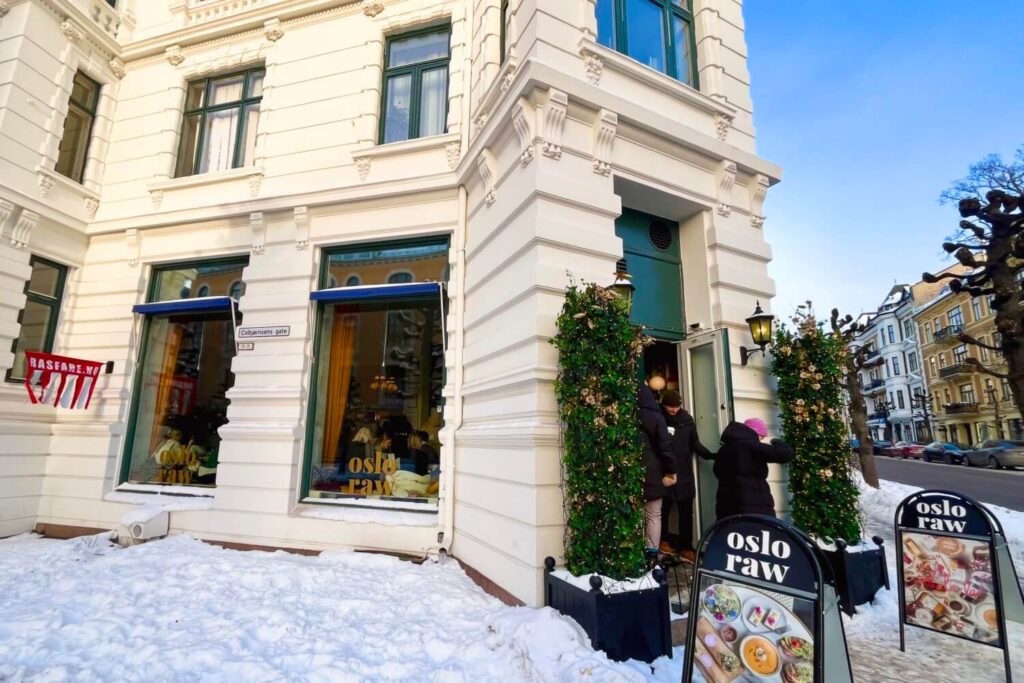When planning a trip to Morocco, it is very easy to find horror stories from previous visitors who have come a cropper of Morocco’s cultural intricacies and societal uniqueness. Tales of being hounded through medinas by relentless faux guides, feeling intimidated and even being scammed or mugged are plentiful. It’s very easy to convince yourself that perhaps Morocco isn’t the best place for you to visit.
Avoiding Morocco however would be a terrible mistake. Morocco is an incredible country that’s chock full of welcoming, generous and hospitable people who are keen to share their bustling souqs, historic monuments, intricate craftwork and full-flavoured cuisine with you.
Sure, Morocco does need a bit of extra thought and planning before you head there, but that’s where we can help.
In this post, we’ll aim to dispel any fears and concerns you might have and instead help you to feel confident about your choice of destination. Anything new can seem scary, but with a bit of knowledge and context, worries start to evaporate.
So, let’s dive in, starting with Morocco’s transport system.
Transport in Morocco
Navigating Morocco using taxis and public transport does require some research prior to arriving. Both may operate very differently to the ways you’re used to, so go armed with some knowledge using our advice below.
Taxis in Morocco
In Morocco, the taxi system may be a little different to what you’re used to. For starters, there are two different types of taxi.
Let’s go through each type in detail.
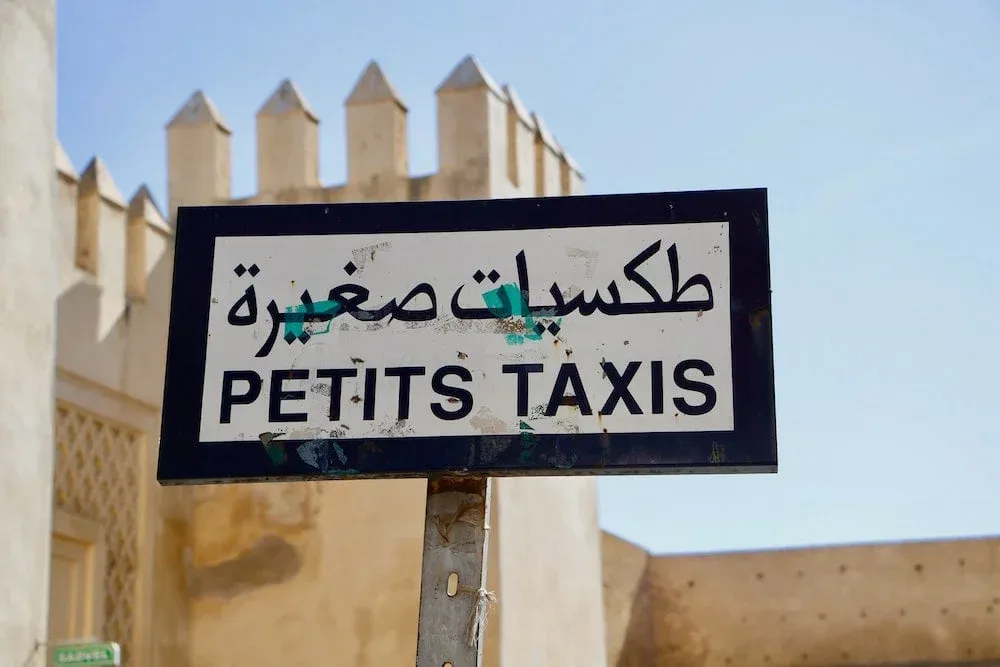
Petit Taxis (Small Taxis)
Petit Taxis operate strictly within town/city limits. They can be hailed at the kerb or hired at designated ranks (normally very clearly signposted). In most cases, Petit Taxis are fitted with meters, but it depends on which town/city you’re in and who your driver is as to whether it’s used. By law, they have to use it, but not everything is so straightforward in Morocco.
Average fares for us were in the region of 20-25MAD with a maximum cost of 40MAD for a nighttime journey where our host phoned a taxi for us. You pay 50% more after 8pm and a little bit extra if you phone for a taxi as the taxi will arrive empty. We think this is fair.
During our trip to Morocco, a typical exchange with a petit taxi driver started with me stating my desired destination and them acknowledging they knew the way. I’d then ask them in French if they’d use the meter (‘Utilisez le compteur?‘). If they agreed, then we’d get in and off we went.
If they weren’t willing to use the meter, they would always counter with a suggested fare which was always very reasonable. If they don’t offer you a fare, ask them how much in French (‘Combien?‘). If you’re happy, get in and you’re good to go. If you’re not happy with the rate, you don’t have to accept it. You could ask them if they’d accept a lower fare or you can try another driver in a different taxi.
In our experience, whether or not drivers used their meters varied depending on the location. Here’s a loose guide on how Petit Taxis operate in different towns/cities:
- Fez/ Fes – We had one driver who seemed confused we were even asking him whether he’d use the meter. Otherwise, all of our taxi drivers made very reasonable fare offers and opted against using the meter. Petit Taxis in Fez are painted red.
- Rabat – Despite Sale and Rabat being connected, they have their own petit taxis and you can’t use one another’s taxis to cross the river, as they are technically two separate cities. Instead, you can use the tram or a grand taxi. From sunrise to sunset you can also be ferried across the river in a row boat, which we’d thoroughly recommend.
- Chefchaouen – The ‘Blue Pearl’ is an anomaly in that its Petit Taxis are not fitted with meters. Whilst you’re there, you’ll need to agree a fare with the driver. Stated fares are normally very reasonable. Pay what you think is reasonable.
- Meknes – All of our taxi drivers used the meter when we asked. Petit Taxis in Meknes are cream coloured.
One additional thing to note is that you might find your driver picks up additional passengers along the way. This was particularly the case in Fes. Technically, they shouldn’t do this, but we thought it made the journey more energy efficient, so we went along with it.
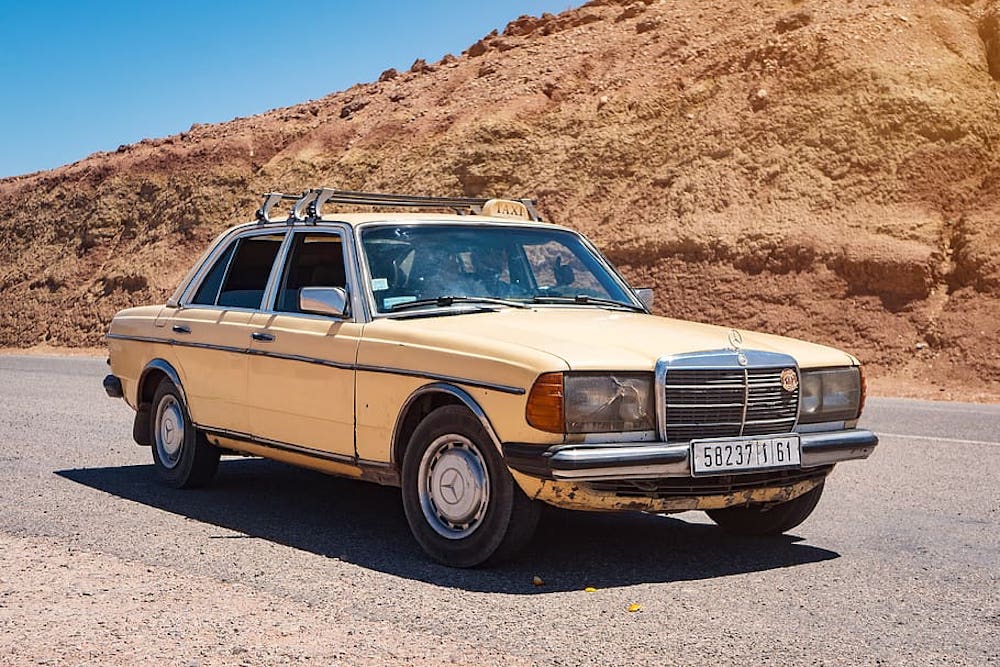
Grand Taxis (Big Taxis)
While Petit Taxis stay within city limits, Grand Taxis travel far and wide and can transport you from city to city at a very reasonable cost. In almost all cases, Grand Taxis start and end their journeys at preset places and have fixed pricing.
There are two ways to hire grand taxis – you can hire a whole taxi for yourself or you can share a taxi with other passengers who are going to the same place as you.
Sharing a Grand Taxi is the most common method. You can find Grand Taxis queued up at designated Grand Taxi ranks in all towns and cities. Upon arrival at a rank, you will commonly find drivers chatting together on the pavement. If you’re not asked where you’re going, get the attention of one of the drivers and tell them. If you’re intending on sharing, tell them how many seats you wish to hire. For example, if there are two of you, say you want two seats (‘deux places’ in French). Whoever you’re speaking to will then point or lead you to the taxi that has been designated as going to your destination. In some cases, you might find the taxi rank is well organised and being managed by someone in a fluorescent jacket. As in the case of Tangier’s gare routiere, you might also find signposted bays that indicate the various destinations. While the system might seem slightly intimidating to first timers, in actual fact, it works brilliantly and drivers are generally pretty helpful.
Hiring an entire Grand Taxi for yourself is more expensive, but it can bring you extra comfort and some extra flexibility. Your fare will depend on your arrangements with the driver. If you’re going to one of the pre-determined destinations, your fare will be the fixed cost of one seat multiplied by six (there are always six seats in a Grand Taxi). If however you are able to arrange for your driver to take you to a different destination or a string of destinations plus waiting time, you will almost certainly need to negotiate a fare with the driver. Doing some research before you arrive at the rank can help prevent you from paying too much.
One thing to bear in mind is that the bigger the town or city, the more Grand Taxi ranks there will be. It is very common for Grand Taxi ranks to only serve specific destinations, so you’ll need to do some research to ensure you’re travelling from the correct rank. Your accommodation host should be able to help you out with this or check on Tripadvisor.
Buses in Morocco
As the cost of travel in Petit Taxis is so low, the likelihood of you wanting to use local buses is virtually nil.
The only time you’re likely to want to travel by bus is when travelling between towns and cities, particularly those that do not have a train connection (between Tangier, Chefchaouen and Fes for example). Even then, it’s always worth keeping in mind that bus fares are pretty close to the prices you’d pay for a seat in a Grand Taxi, so you’ll want to weigh up the two options and decide between them.
If you do decide to travel by bus, try initially to get on a service operated by CTM. CTM are run by the Moroccan government and, out of all the competing bus companies, provides the best and quickest service by some margin. Buses are modern, clean, air conditioned and normally run on schedule.
The alternative bus companies are just okay. Buses are generally older, in poorer condition and don’t have air conditioning. They also stop more frequently en route and only run on a loose schedule. If the bus isn’t full enough to make a profit, it doesn’t leave. With government funding, CTM buses don’t have to worry about such things and generally always leave on time.
While you can normally turn up on the day of travel and get a seat on the next departure, it’s always worthwhile booking tickets in advance. This is particularly the case if you want to travel with CTM. As there is a bit of a gulf between CTM and the rest in terms of quality, seats tend to sell out quickly.
For all bus companies except CTM, you can only buy tickets at the departure bus stations. Prices are fixed, so you’ll pay the same amount whether you buy in advance or on the day.
Your ticket does not usually include large pieces of luggage. Costs can range from 5-20MAD per item depending on the bus company and whether the baggage handler fancies charging you a bit extra. The luggage payment goes towards the handling of your bags, plus the safe monitoring (but not insurance) of your bags during stops.
Most long distance journeys include a toilet stop. CTM have it built into their timetable, but other companies may just wing it. During one of our journeys, we stopped at a chaotic bus station and were told we had just 7 minutes to use the facilities. During the stop, hawkers piled onto the bus trying to sell us things. It was certainly a memorable part of the journey.
Trains in Morocco
The Moroccan train network (operated by ONCF) is often described as the best in Africa. Having travelled on it ourselves, it’s very easy to see why. The trains themselves are modern, clean & reliable and tickets are very reasonably priced (by Western standards).
We travelled with ONCF on two journeys during our trip – from Meknes to Sale (Rabat) and from Sale to Tangier via Kenitra. The first journey from Meknes to Sale was on board a fairly modern compartment train. The train was very clean and comfortable and departed/arrived on time. A trolley visited a couple of times during the journey serving drinks and snacks.
Our second journey from Kenitra to Tangier was on board the Al Boraq, Morocco’s high speed rail service. The trains themselves are almost exactly the same as France’s high speed TGVs. With a top speed of 300kph (186mph), our 200km (124 mile) journey was completed in just under an hour. Inside, the practically brand new train was incredibly smart and comfortable. In the centre of the train was a bistro serving drinks, snacks and hot main meals.
For both journeys, we travelled first class and we’d certainly encourage you to do the same if you can afford it. Prices between first and second class were negligible to us and the upgrade in terms of seat space and comfort was certainly worth it. You also get a seat reservation with a first class ticket which you don’t get with a second class ticket, so you’ll have added peace of mind. Second class is perfectly fine, but first class is much nicer.
When travelling on Al Boraq with a first class ticket, you can spend time in special lounges at your departure station. Here, you can sit back and enjoy free drinks and snacks (though we were restricted to a single drink each at Kenitra station).
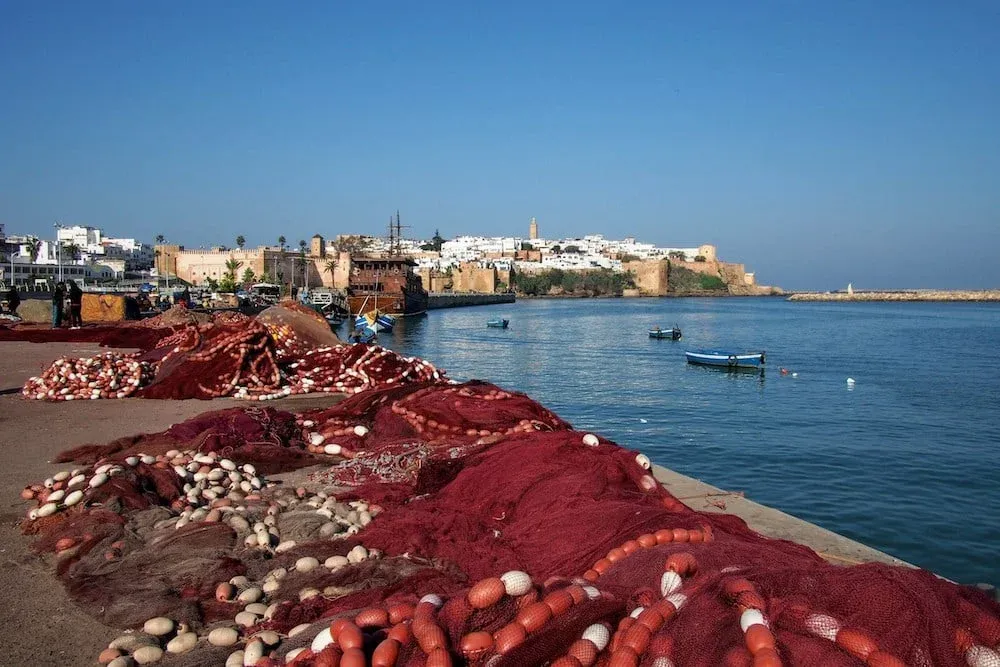
Everything Else You Need to Know Before Visiting Morocco
Now that we’ve covered transport, let’s now go through everything else you need to know before you visit Morocco.
Payment
The currency in Morocco is the dirham. The dirham is pegged to the US dollar, so converting prices is pretty straightforward. For example, to convert to Euros, simply move the decimal point one place to the left (e.g. 20 dirhams becomes 2 Euros). Occasionally, particularly in tourist hotspots and airports, you’ll find prices quoted in Euros only, but it is always possible to pay in dirhams on request.
Morocco is a mostly cash-based society so you should always expect to pay in cash. The common exceptions to this rule is at chain stores and upmarket restaurants in larger towns and cities. It’s always worth asking if cards are accepted so that you’re not having to constantly visit ATMs.
It can be somewhat difficult to buy Moroccan dirhams before you arrive in the country. The best way of obtaining dirhams is to withdraw cash from an ATM using a Visa/Mastercard debit card that doesn’t impose additional fees. Various banks all over the world now offer this as part of their service and this means you always pay a perfect exchange rate.
It’s worth bearing in mind that some Moroccan banks charge a service fee for using their ATMs. One exception that we noticed was BMCI’s ATMs (operated by French bank BNP Paribas)
If your bank imposes fees on foreign withdrawals, the next best option is to exchange cash at the airport. This is commonly commission free and the exchange rates are generally okay.
Marriage certificate
It is against the law in Morocco for unmarried Moroccan couples to sleep together in the same room. This can sometimes impact non-Moroccans with accommodation imposing a blanket ban on unmarried couples sharing rooms at their own discretion.
During our trip, we didn’t encounter any problems with this. However, it would be prudent for married couples to have a copy of their marriage certificate with them just in case you are asked. We took a photo of our certificate on our mobile phones.
Unmarried couples should be aware of this law, but you’d be unlucky if you encountered any problems.
Moroccan Sim Cards
If you’re anything like us, you’ll find having a local sim card in your mobile phone useful. In Morocco, there are three networks (Orange, Maroc Telecom and Inwi) and they all provide a similar service at very similar prices.
We arrived at Fes Airport and found a small newsagent in arrivals that sold Orange sim cards. We got 5GB of data for 100MAD. It turns out that we might have been overcharged and that it is possible to get the same data allowance for around half that price. The lady running the shop instinctively installed and set the sims up for us without us having to ask.
Getting pay as you go sim cards in Morocco is very easy, so if you can’t manage to get one at the airport upon arrival, simply track down an Orange, Maroc Telecom or Inwi shop once you arrive at your destination. They’re very easy to spot and can be found in most towns and cities.
Failing this, sim cards are sold pretty much everywhere. We saw sims being sold on branded market stalls and even in hole-in-the-wall confectionery kiosks. Before you buy, check the price and ensure the seller can set it up for you (setup requires a code being texted to a number and the instructions are usually only in Arabic). If you buy a sim card and you can’t get it set up, your accommodation host should be able to help you out.
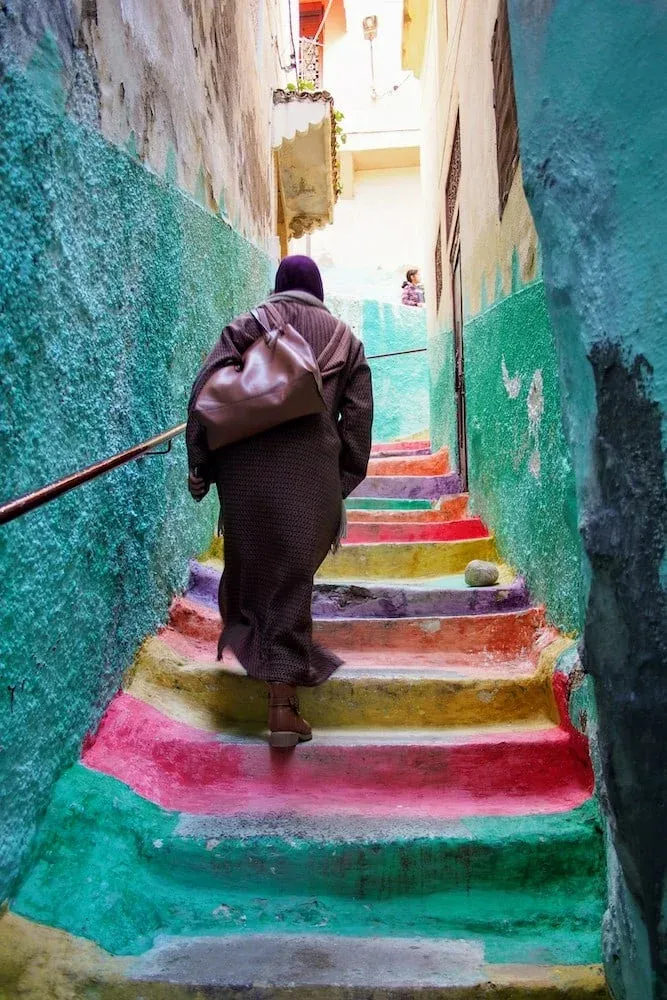
Getting Around on Foot
During our trip to Morocco, we used Google Maps. On the whole, it served us pretty well and in most cases, even narrow paths in medinas were on the map. That said, using Google Maps in a medina can sometimes be troublesome. The narrow alleyways can occasionally block the signal, causing the app to lose track of your exact location.
An alternative app, Maps.ME, is recommended by many travellers to Morocco. It’s an offline map app which enables users to download maps to their phones. Crucially, the app is also able to plot navigation routes without a data signal (something Google Maps struggles to do). Reviews we’ve read indicate the app has most, if not all of Morocco’s medinas mapped out, so it’s certainly worth looking into. The app is free and supported by advertising. It can be downloaded on iOS and Android.
Packing for Morocco’s Weather
When it comes to weather, Morocco isn’t as easy to pack for as you might think. Generally, temperatures in Summer are hot, sometimes unbearably so. If however you’re spending the night in the desert, it’s worth noting that nighttime temperatures can plummet even in the height of Summer. You’ll want to be prepared for this to avoid shivering all night.
In winter, temperatures can fluctuate dramatically between morning and midday and then after dusk. During our January stay, morning and evening temperatures even in city centres hovered around zero celsius (32F).
If you’re staying in a riad (see below), you will want to pack extras layers. While rooms may have some form of heating (usually an air conditioner), the communal areas and central courtyards (where breakfast is usually served) are normally not heated. Sitting in the chilly air waiting for your breakfast to arrive can be quite unpleasant.
Temperatures in Winter usually pick up quickly and, during our stay, were in the mid-to-high teens by lunchtime (in the region of 60F). This wide fluctuation in temperatures poses a bit of a packing challenge, especially if your baggage allowance is tight.
It’s certainly something for you to think about.
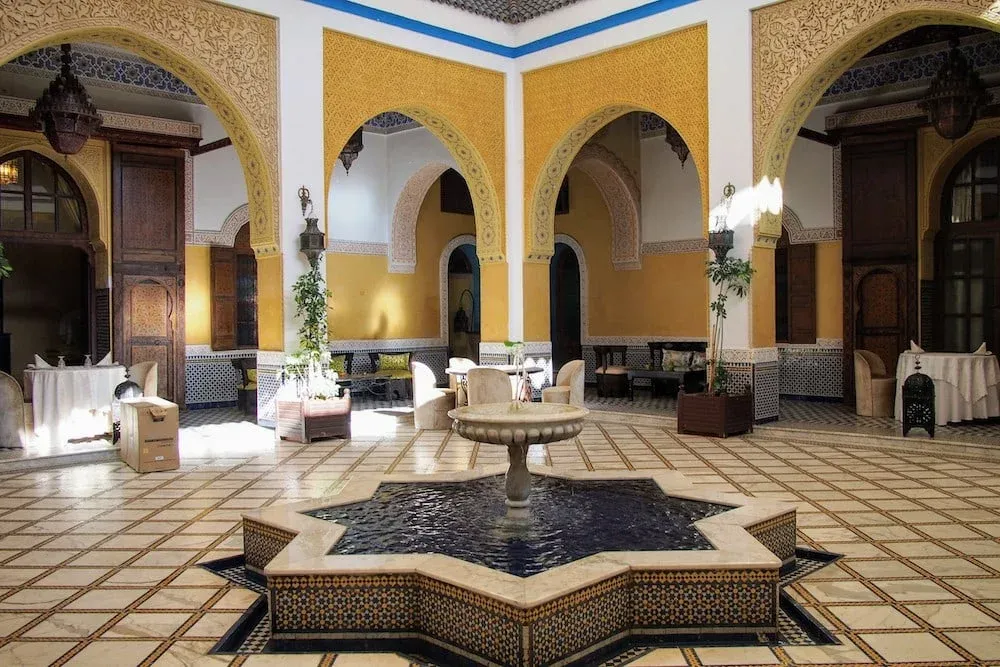
Staying in Riads/Dars in Morocco
One of the highlights of visiting Morocco is the opportunity to stay in riads or dars. Riads/dars are large traditional Moroccan houses and sometimes former palaces. They all have a central courtyard inside which is a water feature and they are often lavishly decorated in an unmistakable Moroccan style.
The quality of the accommodation and service at Moroccan riads is normally second to none and with rates being considerably lower than you might expect (particularly during off-season or in some of the lesser explored towns and cities), we highly recommend you stay in riads during your trip.
There are a couple of minor things to note if you’re planning on staying in riads. These points certainly shouldn’t dissuade you from staying in riads, but they’re just worth keeping in mind.
- Riads and dars can be cold in Winter. We stayed in four riads during our trip. Three rooms were equipped with air conditioning units that efficiently warmed the rooms. The forth room had a small electric heater that didn’t do very much more than take the chill off a bit. The main problem with heating in riads is the central courtyards where breakfast is usually served. Some have roofs and others don’t and regardless, many are not heated at all. Breakfast can be a pretty chilly affair.
- There’s normally good, free Wifi. Wifi was generally pretty good during our trip – good enough to stream Netflix in most cases. Walls though tend to be pretty thick in riads, so expect some dead spots here and there.
- Be flexible. We encountered one instance of prolonged electrical failure during our stay. From our research, this does happen from time and time and you just have to roll with it whilst staff offer their sincere apologies and attempt to rectify the problem.
Most of these points are as a result of riads being retrofitted from family homes to modern guest accommodation. The buildings just weren’t built for their modern day purpose. Check listings and reviews to ensure the hot water, heating and wifi are at least adequate before you book.
During our trip to Morocco, we stayed at the following riads/dars and can vouch for their quality and authenticity:
- Palais Didi, Meknes – See reviews and book on TripAdvisor
- Riad Marlinea, Sale (Rabat) – See reviews and book on TripAdvisor
- Afra House, Chefchaouen (a little bit cold a night)
- Riad-Boutique Borj Dhab, Fez – See reviews and book on TripAdvisor
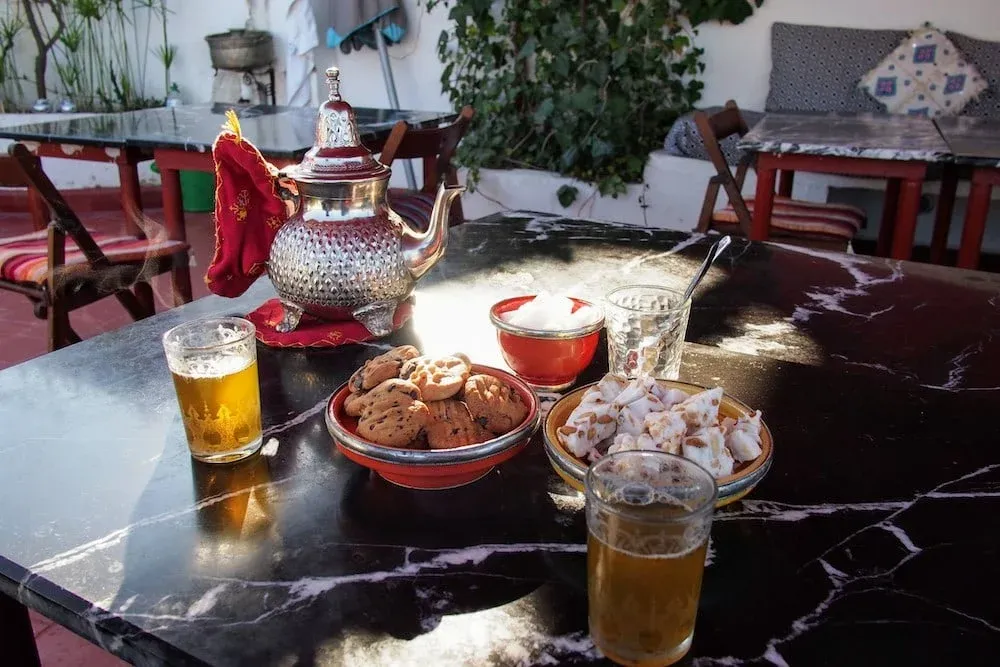
Attraction Closures
As a result of significant development and restoration works occurring all over Morocco, it is common to find attractions are closed indefinitely. We lost count of the number of times we’d plan to visit a landmark, museum or attraction, only to find it was closed for works.
The rule here is to not strictly trust your guide books, as even our 2019 edition guide book was already out of date. Google Maps was generally a pretty good source of information in terms of finding out whether an attraction was open to visitors.
Itinerary
One thing we were mindful of when booking our trip to Morocco was that we weren’t covering too much ground. Morocco is a large country and travel between certain towns and cities can take time and effort. As a result of this conscious effort to avoid burning ourselves out, we decided to cover only the northern portion of the country during our trip.
Our itinerary looked like this;
- Day 1: Arrival at Fes Airport. Grand Taxi to Meknes and exploration of Meknes
- Day 2: Meknes. Grand Taxi to Moulay Idriss and tour by local guide. Walk to Volubilis. Grand Taxi back to Meknes.
- Day 3: Train to Salé. Afternoon/evening in Rabat city centre.
- Day 4: Salé medina. Boat to Rabat. Explore city centre and Kasbah.
- Day 5: Train to Tangier. Grand Taxi to Chefchaouen.
- Day 6: Exploration of Chefchaouen.
- Day 7: Bus to Fes. Vegetarian cooking experience in the evening.
- Day 8: Organised tour of Sefrou & Bhalil
- Day 9: Exploring Fes medina
- Day 10: Visit local Hammam. Transfer to airport and flight home.
By ensuring we only covered towns and cities in Morocco’s northern tip, we were able to restrict the pace of our trip more than we would have been able to do had we also included the rest of the country. We also made sure that there were other places for us to explore should we decide to return to Morocco sometime in the future.
The message here is don’t cram too much in. Sticking to a particular area or region will mean you won’t overdo it and will help you to feel more connected with Moroccan culture.
Tours Vs. Self-Guided Trips
It’s pretty common for tourists to visit Morocco as part of an organised tour. Perhaps it’s the fear of the unknown or the potential risk of culture shock that encourages people to hand over the leg work to the experts.
We get it. We were strongly considering booking onto an organised tour ourselves. This is despite never having been on an organised tour before. It took some courage to decide to do things ourselves, but we’re really glad we did.
The main reason we planned our own trip to Morocco was that most of the organised tours we came across covered way too much ground for our liking. It seemed like we would be spending a long periods of time on a bus and less time soaking in the atmosphere and getting close to local life.
It turned out that planning our own itinerary was pretty straightforward. Sure, it does take more effort, probably more so than you would if planning a trip to Europe, but the rewards outweigh the negatives.
I guess it will come down to how much time and effort you’re willing to put into planning your own trip. If you have both, we fully recommend arranging your own itinerary.
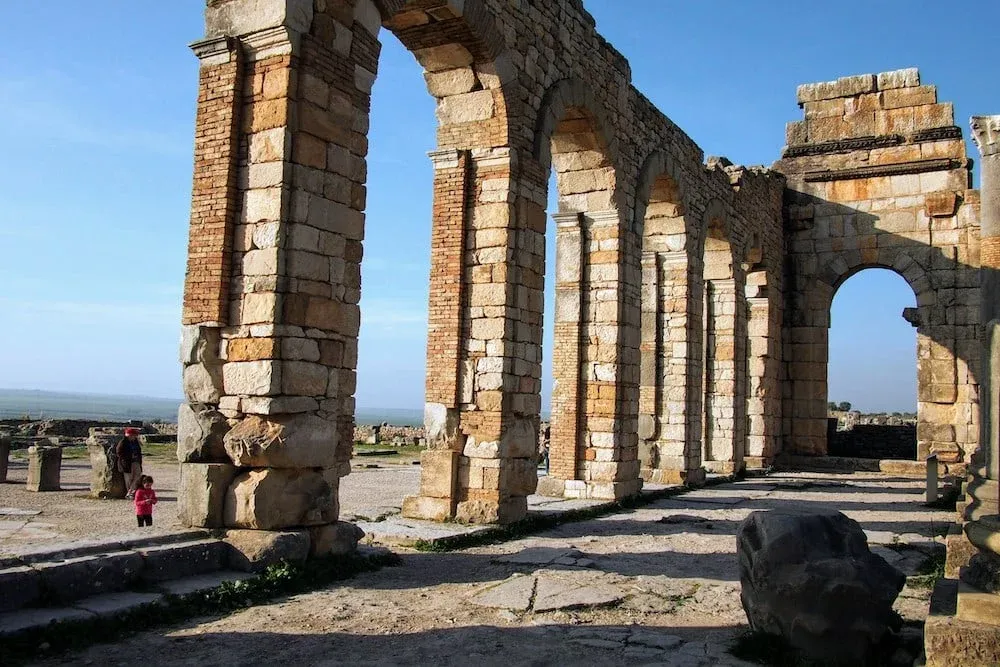
Veggie & Vegan Food Options in Morocco
While it’s not a completely hopeless situation, veggies (and vegans in particular) will have some difficulty eating out in Morocco. Veggie and vegan options are rarely labelled as such on menus and even then, there’s a risk that misunderstandings of vegetarianism and veganism could lead to dishes not being strictly safe for veggies and vegans.
In medinas, it’s rare (but not completely unheard of) to find non-Moroccan food options, meaning that even for veggies, it’s difficult to avoid having to go with vegetable Tagine and Cous Cous every night. Whilst they are delicious, having the same food every night of your trip can become tiresome.
For a wider selection of cuisines and a greater likelihood of seeing veggie and vegan options on the menu, head for the newer parts of town (normally referred to as Ville Nouvelle).
Two veggie/vegan restaurants we can totally recommend are; Cafe Clock who have restaurants in Fez, Marrakech and Chefchaouen; and Veggie Pause in Fez.
TripAdvisor is a good place to track down restaurants in Morocco that cater to veggies and vegans. They have a filter specifically for this purpose.
One way to combine eating traditional Moroccan vegetarian/vegan food and going on an experience is to book onto a cookery workshop. There are some experiences that specifically cater to veggies/vegans and others can make adaptations upon request. There are plenty to choose from all over the country. Head to Viator or GetYourGuide to start going through the options.
Alcohol in Morocco
Morocco is a (mostly) dry country with alcohol much more difficult to come by than you might normally expect. It is available in larger supermarkets and some hotel bars serve it, particularly if non-moroccan tourists frequent it. On the whole though, it’s rare to see it being sold.
Language in Morocco
There are two official languages in Morocco – Arabic & Berber. It can be useful to learn some very basic Arabic words and phrases just to help you assimilate with the locals.
French is a much more useful language to know. While it’s not an official language, it is the lingua franca. You’ll see French written pretty much everywhere and almost everyone understands it to some extent.
In touristy towns and cities, there is a sporadic understanding of English. Generally, comprehension of English increases as the number of tourists increase. That said, with the exception of tour guides and staff in hotels and riads, you shouldn’t expect locals to understand English and you should instead attempt to communicate in French.
During our trip, we communicated with locals almost exclusively in French.
Toilets in Morocco
Rest assured, your accommodation will likely have western-style sit-down toilets. Outside of your accommodation however, things might not be so rosy.
Public toilets and toilets in private homes and some cafes/restaurants might only have squat toilets. It really does depend on the place you’re in – you can kind of tell by the feel of the place.
One thing that’s consistent is that toilet paper in public toilets is usually not provided. Occasionally, toilet attendants (who you will need to tip at least 2 MAD) will offer toilet paper to you. In case this doesn’t happen though, you should be prepared and take a pack of tissues in with you.
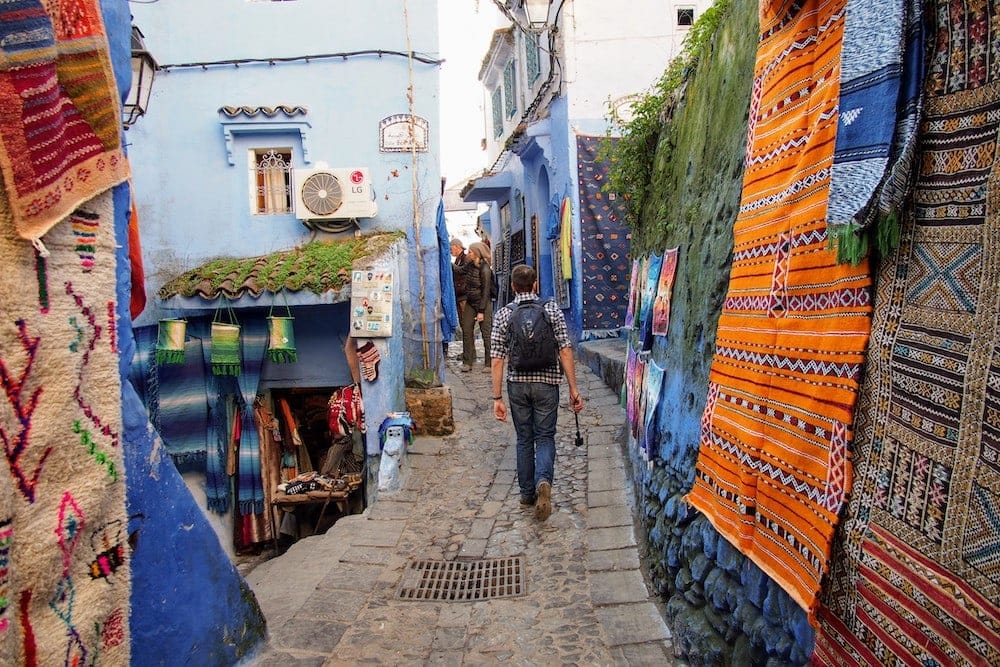
Faux Guides in Morocco
One thing I was pretty wary of when researching and planning our trip to Morocco was faux guides. It’s something you come across fairly routinely online when reading about Morocco. Indeed, it’s pretty easy to find some pretty scary stories about how tourists felt intimidated and threatened by these so called faux guides.
The name ‘faux guide’ is given to a someone who approaches you and uses a variety of tactics to encourage you to pay them for their assistance. Medinas are a rabbit warren of narrow lanes, often leading to nowhere and it’s almost a guarantee non-locals will get lost. It’s therefore logical that people will see an opportunity to make money by offering to help them to their destinations.
Unfortunately, some go a step too far by using underhand tactics to get money out of tourists. They’ll tell you the lane ahead is closed when it might not be. They’ll ask you which riad you’re staying in, tell you it’s closed and then take you to another one where they might receive a commission. They’ll follow you incessantly for several minutes hoping that you’ll give up trying to avoid them and instead agree to let them help you. Worse still, it’s a common tactic for faux guides to demand payment from you regardless of whether they helped you or not.
Typically, the starting questions/statements will always be one of the following;
- Where are you from?
- Where are you going?
- Where are you staying?
- That way’s closed!
Regretfully, if you’re on you way to somewhere in particular, the best way of dealing with people approaching you is to completely ignore them. This will almost certainly feel rather rude and unnecessary, but it’s the only way to avoid being driven mad or getting scammed.
In the event a faux guide won’t leave you alone and you feel intimidated, you should shout for the police. This might draw some derisory comments, but it usually causes faux guides to scarper. The police take a very dim view on faux guides and will lock them up if they’re caught in the act.
An alternative option is to head into a nearby shop and ask the shopkeeper for help. On the whole, regular locals will want to help you.
During our stay, we didn’t encounter any problems with faux guides. People did offer to help us, but we either completely ignored them or we firmly made it clear we didn’t want any help.
It’s worthwhile mentioning that not everyone who offers to help you will employ these unpleasant tactics. The problem is that it’s virtually impossible to differentiate between genuinely helpful people and those with unscrupulous intentions. Unfortunately, ignoring offers of assistance is the best way of keeping out of trouble.
Tipping in Morocco
In Morocco, tipping is expected in many scenarios and it’s not uncommon for service providers to ask you outright for a contribution. While you may be used to working out 5-10% tips in other parts of the world, tips in Morocco are normally considerably smaller. A few dirham here and there is always appreciated and shouldn’t make too much of a dent in your daily spending.
Here’s a quick guide to how much you should tip in various scenarios:
- Porters – 5-10 MAD is sufficient.
- Waiting staff in cafe/restaurants – If you want to reward good service, 5 MAD is customary, regardless of the bill total.
- Petit Taxis – Petit taxi drivers don’t expect to be tipped, but it’s common for passengers to round up to the nearest 5 MAD.
- Grand Taxis – Grand Taxi drivers do not expect to be tipped and it’s quite normal for passengers to pay the fixed price and no more.
Haggling in Morocco
For most visitors to Morocco, one thing they fear is haggling. Haggling for goods in shops is as Moroccan an experience as you’ll get, but it’s often perceived wrongly by tourists.
Rather than seeing the experience as a potential pitfall, you should try seeing haggling as a social exchange. In general, shop keepers are not trying to rip you off. They expect you to barter over the price, so if they start at a ludicrously high price, they’re merely starting the conversation. Your response should be to offer around half of their starting price. Do so with a smile and you’ll do well.
The end result of haggling should be that both parties walk away happy from the negotiation. This includes you. You should feel happy that you’ve paid a fair price, not necessarily the best price. If you walk away from haggling unhappy, something in the exchange has gone amiss.
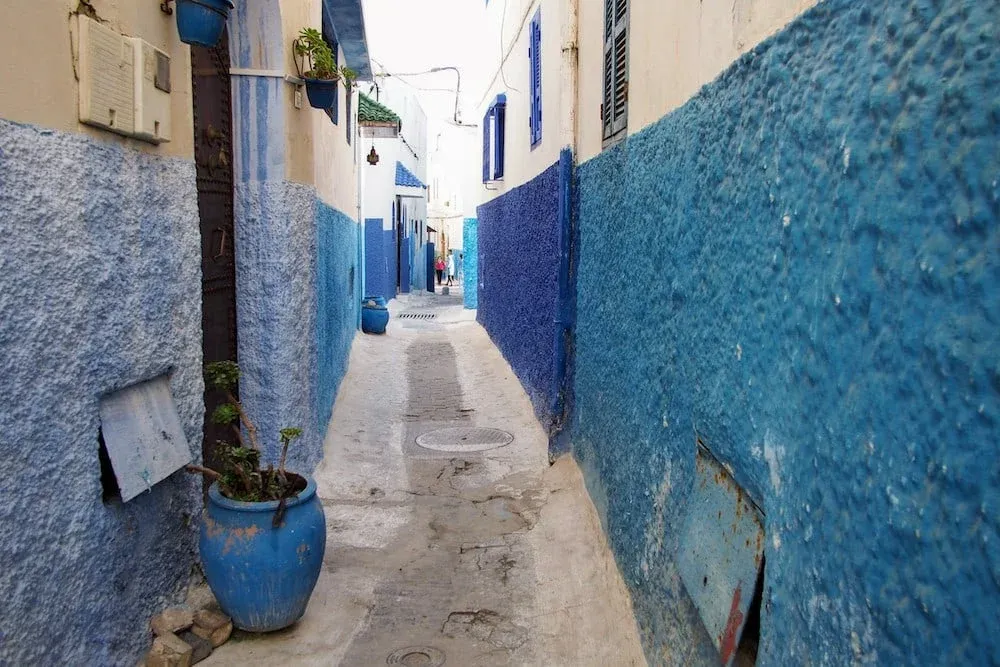
Religion and Cultural Sensitivities in Morocco
Morocco is a predominately Islamic country and so there are a couple of things to bear in mind if you’re not all that familiar with such societal and cultural norms.
- Apart from the Hassan II Mosque in Casablanca, non-muslims cannot enter mosques. If you want to take a peak, you can sometimes stand discretely in the doorway and peer in.
- Moroccans in general are sensitive to having their photos taken without permission. If you wish to take photos where people are obviously in shot, you should ask for permission first. We asked several times during our visit and we were granted permission every time.
- Both men and women should aim to dress conservatively. This doesn’t mean that women need to cover their heads, but it does mean that particularly skimpy outfits should be avoided. In more touristy spots, attitudes towards clothing are more relaxed, but in non-touristy spots, you should be mindful of the potential offence your clothing might cause.
- Similarly to the previous point, couples should try to behave modestly and avoid showing too much physical affection towards each other in public. Again, larger towns and cities are more tolerant to physical contact, but it should still be avoided if possible. Hand-holding and kissing may cause offence or awkwardness.
- During Ramadan, business hours are more restricted than they might be at other times of the year. If possible, check ahead before you make any special trips. Additionally, since a vast majority of population will be fasting during daylight hours, you should be considerate when eating in public, ideally avoiding it entirely if possible. You might find some restaurants close their outdoor seating areas during the daytime out of consideration to those who are fasting.
Safety in Morocco
Morocco is generally a safe country and most visits are trouble-free. During our stay, we didn’t feel unsafe, even when walking through medinas at nighttime.
The main threat to tourist safety is from petty criminals and faux guides. Pickpocketing, particularly in busy souqs and squares does happen and you should take reasonable precautions to prevent you from becoming a victim. Keep valuables hidden and tucked away inside bags and keep eyes on your zips.
Faux guides (people offering to show you around) can be a nuisance, particularly in Morocco’s larger cities. Personally, we didn’t encounter any problems, but there are stories of faux guides being particularly persistent, bordering on intimidating. The first thing to do is completely ignore people who address you in the street. Typical tactics include asking you where you’re going, asking which riad you’re staying in or asking you where you’re from.
If a faux guide won’t leave you alone, head into a shop or make a scene. Police take a strict stance against faux guides, so if you appeal for help from shopkeepers or start shouting “police”, faux guides usually disappear pretty quickly.
Drugs in Morocco
Moroccan authorities take a strict stance against drug use and you would be a fool to go anywhere near any illegal narcotics. Airport security is very tight and we were searched and swabbed for drugs as we entered and exited the airport.
Despite the government’s tough stance, kiff (a mixture of tobacco and marijuana) is pretty popular amongst locals and you should expect to be offered it from time to time. This is particularly the case in Chefchaouen and especially on the walk up to the Spanish Mosque. Don’t worry though, as the dealers aren’t pushy or threatening. In fact, most were friendly and polite. Smile and decline and you shouldn’t have any problems.
Luggage
One mistake we made on our trip to Morocco was taking a suitcase. Even our modern four-wheeled suitcase struggled with the uneven and unfinished pavements in Morocco’s medinas. While we would normally favour travelling with a suitcase, we advise taking a backpack with you to Morocco instead. While it might seem more bothersome, a backpack will help you to navigate Morocco’s medinas much more easily.
Plan & Book your visit to Morocco
In this section, we’ll go through how you can plan and book your visit to Morocco.
Getting to Morocco by Air
Most international visitors arrive into Morocco via airports in Marrakech, Fez, Casablanca and Tangier.
The country is very well served by a variety of low cost airlines from Europe and full service airlines from further afield. Since there’s plenty of competition, flights prices are generally pretty reasonable year round.
Click the button below to find the cheapest fares to Morocco with Skyscanner.
Getting to Morocco by Boat
Thanks to a high frequency of services and low prices, it’s quite common for visitors to arrive into Morocco from Spain by ferry. Direct Ferries have all the details and will help you find sailings and fares.
Hotels in Morocco
Tourism in Morocco is a a major contributor to the country’s economy, so you should never have any trouble finding somewhere lovely and relatively inexpensive to stay. Tripadvisor is a great place to start your search for accommodation. They combine millions of reviews with a search engine that simultaneously search hundreds of booking sites so you don’t have to.
Activities, Tours & Excursions in Morocco
Morocco is packed full of amazing experiences and excursions. So much so in fact, it’s hard to recommend just one website for you to track them down.
Click through each of the to options below to see what amazing experiences are on offer.
- GetYourGuide is the next best place to track down experiences in Morocco. We really like how easy it is to browse the experiences on offer.
- Viator is similar to GetYourGuide and we’re listing it here as some readers may be more familiar for Viator as a brand. Head to Viator now to find unique experiences in Morocco.
We really hope that you’ve found this guide to Morocco useful and that it helps you to have an enjoyable and safe trip. If you have any further questions, please drop us a message in the comments box below. Additionally, if you’ve been to Morocco and you have tips to share, please also use the comments box.
